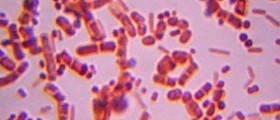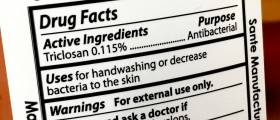Staphylococcus aureus (staph) are bacteria that live on the skin and nose of people. These are usually harmless but sometimes can cause infection and serious illness. Some species of staphylococci have become resistant to the antibiotic methicillin and other antibiotics used in the past for treating these infections.
Infections resistant to methicillin (MRSA) are difficult to cure because most antibiotics can not destroy the bacteria. A person can get the infection in the community, as well as in hospital environment. MRSA penetrates into the body through broken skin or bloodstream. People who have health problems such as diabetes or a weakened immune system, or where the skin is damaged due to wounds, recent surgery or dermatitis are more susceptible to staphylococcal infections.

MRSA can cause:
1. skin infections such as boil and impetigo
2. subcutaneous infection (cellulitis)
3. more serious infections like bones, blood, lungs and other body parts infections.
MRSA Treatment Options
MRSA treats with special antibiotics. Other types of treatments include flexion and surgery, depending on the type of infection. Infection reveals by taking a bacteriological swab of the skin or nose, or wound, urine, blood or sputum swabs which are sent to laboratory testing. Due to the fact set forth, there is no universal antibiotic for MRSA treatment.The doctor, before prescribing the medication first must determine the severity and cause of the infection and then adjust the appropriate treatment. In any case, the treatment of this infection should be addressed without delay since it can cause very serious consequences and even death. If weakened immune is the cause of the infection system antibiotics Vancomycin and Teicoplanin are given to the patient. However, if the infection is caused by staphylococci in the nose, apply antibiotic mupirocin to avoid the further spread of these bacteria. Although MRSA is resistant to many antibiotics, Vancomycin, Teicoplanin, Quinupritin, Linezolid, Rifamvin, Clindamycin, Septra and Avelox are still very effective in the elimination of these bacteria.
- We reviewed a prospective database of 247 consecutive patients with clinically and microbiologically confirmed MRSA infections, hospitalized in 7 Japanese hospitals between April 2014 and March 2015, and treated with anti-MRSA pharmaceuticals. Survival was measured at 30 days. We examined the relationships between initial antimicrobial administered and survival and organ toxicity. HR and 95% CIs were calculated.
- Overall 30-day mortality was 12%. The lungs were infected in 105 (41%), skin and soft tissue in 73 (30%), and bones and joints in 21 (9%) patients. Bacteremia complicated the illness in 69 patients (28%). Among 5 pharmaceuticals, vancomycin was prescribed to 174 (71%), linezolid to 38 (16%), teicoplanin to 22 (9%), and daptomycin to 11 (5%) patients.
- Vancomycin tended to be associated with the lowest survival (HR=2.47; 95% CI=0.93–6.51; P=0.067), particularly in the lung-infected subgroup (HR=4.85; 95% CI=1.12–20.94; P=0.034) after adjustments for baseline illness severity. The incidence of renal dysfunction tended to be higher in patients with trough serum concentrations of vancomycin >15 mg/dL.
- We recorded the duration of initial administration of each anti-MRSA drug and their doses, total duration of therapy, the substitution of other drugs, and time and causes of treatment discontinuation. In the case of glycopeptides, the initial trough serum concentration was measured 3 days after the onset of therapy. No standard protocol of drug administration was used by the participating institutions.
- Among various anti-MRSA drugs, the in vitro bactericidal potency of daptomycin against Gram-positive pathogens is the highest. Studies comparing the efficacy of daptomycin versus vancomycin have also suggested the superiority of daptomycin in specific settings. A randomized trial comparing the efficacy of daptomycin with that of glycopeptides supports the use of the former as first-line treatment for complicated skin and soft tissue infections.
MRSA Transmission
MRSA can be transmitted by:
1. pressing or touching infected body parts, such as ulcers and wounds,
2. using towels, clothes or bedding used by the infected person,
3. using equipment for personal hygiene, used by people with MRSA infection,
4. if hands aren’t washed thoroughly.
MRSA Prevention
Regular and thorough hand washing is important in preventing the spread of MRSA infection. Patients should bear in mind that these bacteria are prone to genetic mutations. It is noted that patients often abandon treatment at halfway usually because of excessive costs of treatment. If treatment is interrupted, the bacteria will become stronger and more resilient. That means that the treatment of this infection should be tenacious and persistent.

















Your thoughts on this
Loading...